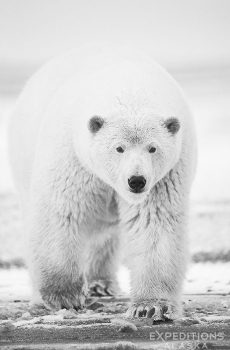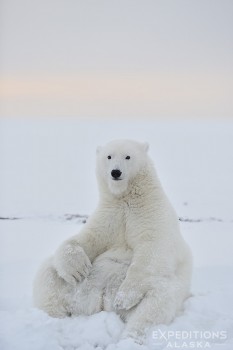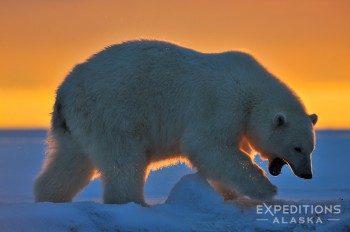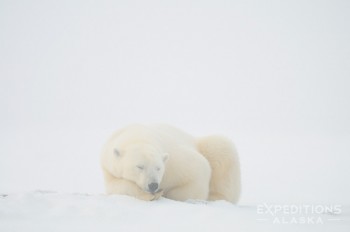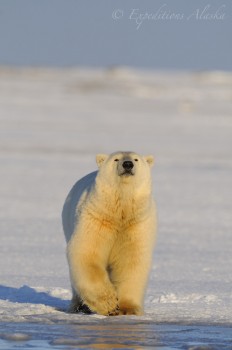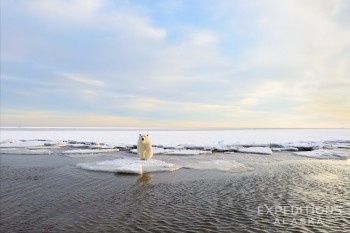
Standing on thin ice a polar bear curiously approaches. Polar Bear ice, in the Beaufort Sea, Arctic National Wildlife Refuge, Alaska. Please click on the image above to view a larger version of this photo.
Hey Folks,
Here’s a polar bear photo from my trip to the arctic last month. Given the predicament bears in the Beaufort Sea find themselves in (declines in accessible food due climate change), I thought the image a particularly relevant one.
Polar bears are classified as marine mammals, not, like their darker coated brethren to the south, mammals who earn their living on good old terra firma. Polar bears hunt, almost exclusively seals, and particularly 2 species of seals; primarily ringed seals (Phoca hispida) and less often, bearded seals (Erignathus barbatus). That alone makes polar bears particularly susceptible to population declines; any animal whose primary food source s merely one or 2 other species is somewhat vulnerable. This applies no less to herbivores who may exist on one or 2 types of plants. A crash (or boost) in the abundance of their food source will have an enormous impact on the population of their own species; a look at the lynx and the snowshoe hare cycles illustrates this.
So climate change has shifted the world for the polar bear; here’s a quick, and rough, summary of how.
The most productive waters in the arctic ocean are under sea ice, in the shallower areas over the continental shelf. Deeper water doesn’t hold light as well, and so tiny little critters like plankton and what not don’t do as well. They feed on the algae that grows and collects on the bottom of the sea ice. So where the plankton population is higher, so too is the population of the little critters that feed on plankton; shrimp and such. Fish eat shrimp, and bigger fish and regular size fish, and seals eat bigger fish. Where there’s no sea ice, there’s no algae growing. And if there’s no algae, no plankton, no shrimp, no regular size fish, no big fish, no seals and, you guessed it, skinny, hungry polar bears swimming around wondering why they can’t find any food. Continue reading →
